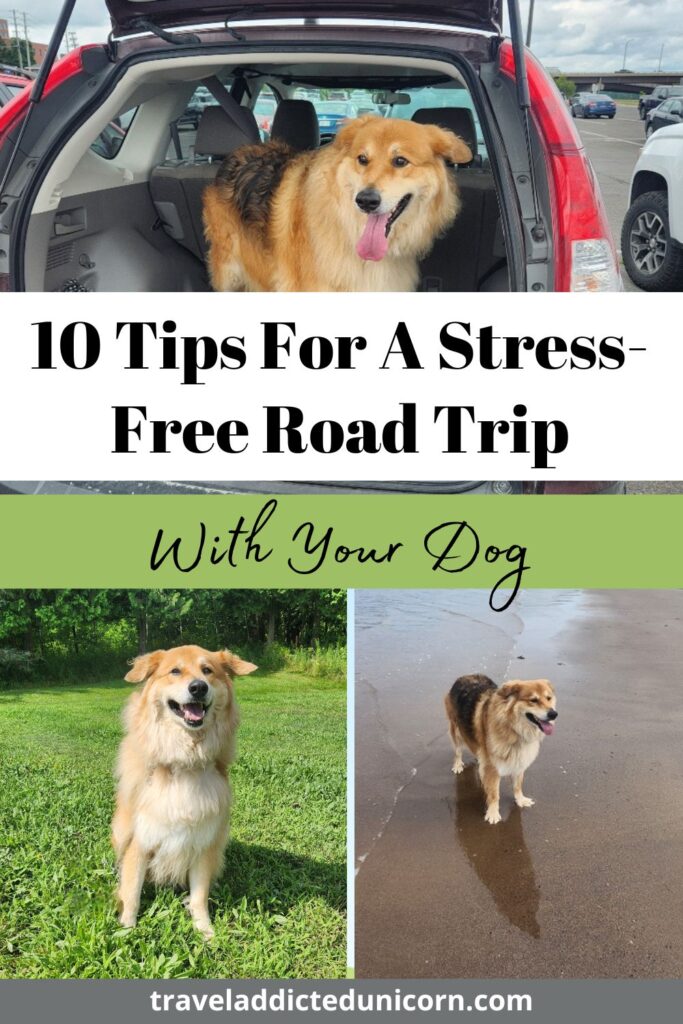The Secret To A Stress-Free Road Trip With Your Dog? It Starts With These 10 Tips

Are You Planning A Road Trip With Your Dog, But Are Not Sure Where To Start? Keep Reading To Find My Best Tips!
So, what are some tips when going on a road trip with your dog?
There’s nothing quite like hitting the open road with your furry best friend.
Whether you’re cruising through scenic backroads or heading to a pet-friendly vacation spot, road tripping with your dog can be one of the most rewarding travel experiences.
But let’s be honest—without the right preparation, it can also get chaotic really fast.
From restless energy in the back seat to surprise pit stops and forgotten essentials, travelling with a dog comes with its own set of challenges.
That’s why I’ve rounded up the 10 most practical and sanity-saving tips to help you plan a smooth, safe, and fun road trip, for both you and your pup.
Also, I have created a helpful Pet Travel Kit Checklist that you can use to prepare for your next road trip.
1. Get Your Dog Comfortable With The Car In Advance
Before you set off on a long road trip, it’s important to make sure your dog feels safe and relaxed in the car.
If your pup isn’t used to car rides or only associates them with trips to the vet, they may feel anxious, restless, or even carsick.
Start by taking short, positive trips around your neighborhood or to fun destinations like the park or pet store.
Gradually increase the length of these drives over time, rewarding your dog with treats and praise so they form a positive association with being in the car.
If your dog is especially nervous, try feeding them their meals in the parked car or letting them sit inside with you without the engine on.
You can even bring along their favorite toy or blanket to create a familiar and comforting environment.
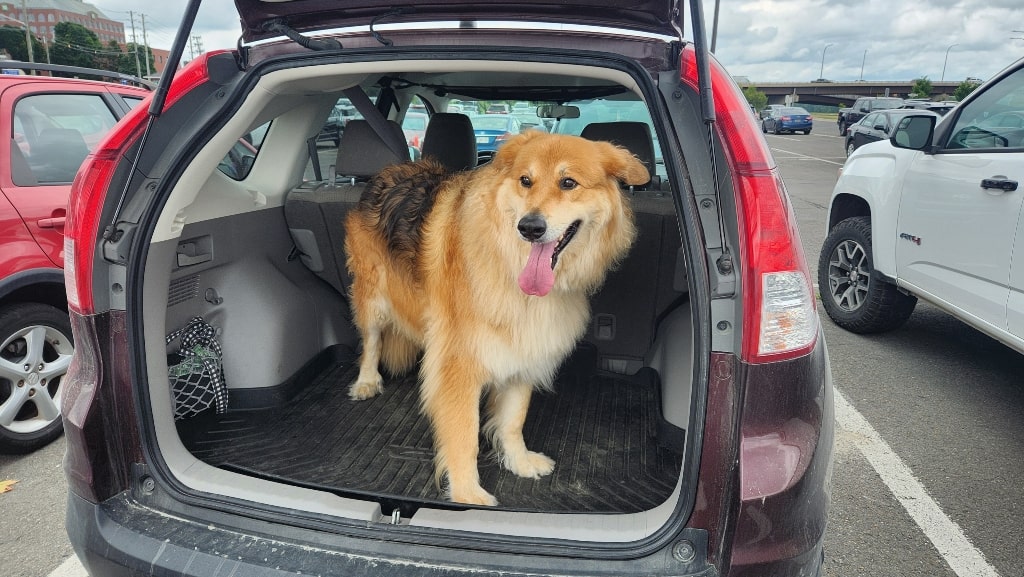
For dogs prone to motion sickness, avoid feeding them a big meal right before driving. Also, ask your vet about calming supplements or medication if needed.
I usually give our dog anti-anxiety medication an hour before a long car ride, just so that he is not unnecessarily stressed.
He used to be a street dog from Eastern Europe and has probably never been in a car before.
In the beginning, he would not go inside the car, and it took a while to finally get him to jump in.
He’s still not a hundred percent, but it is a work in progress.
The key is to normalize the car as part of their routine so that by the time your road trip rolls around, your dog is calm, confident, and ready for adventure.
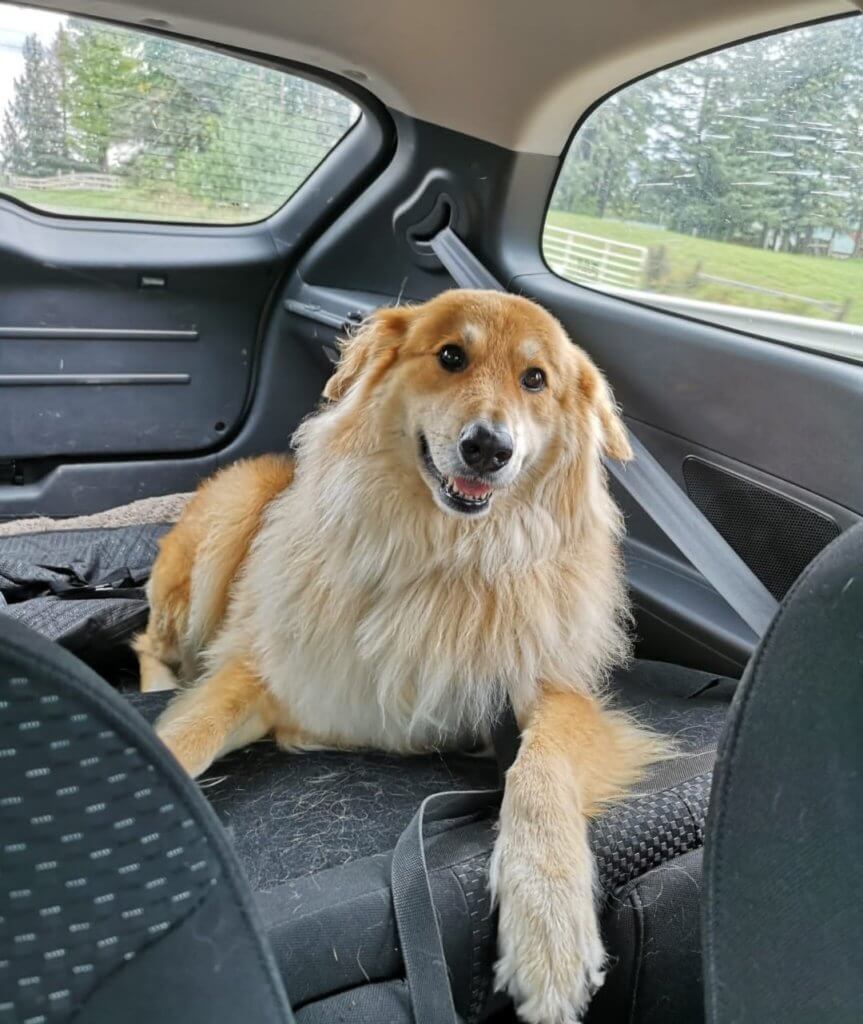
2. Plan Dog-Friendly Stops Along Your Route
A well-planned road trip isn’t just about the destination. It’s about the journey, especially when your dog is along for the ride.
Unlike solo or adult-only road trips, you can’t just drive for hours on end without considering your pup’s needs.
Dogs need time to move, sniff, potty, and simply not be in a moving vehicle.
And if you skip these essential breaks, your dog can become anxious, uncomfortable, or even destructive in the car.
To avoid last-minute scrambling, map out dog-friendly stops ahead of time.
Apps and websites like BringFido, PetFriendly.io, and even AllTrails (for finding quick nature walks or hikes) can help you locate:
- Rest stops with grassy areas
- Off-leash dog parks or trails
- Pet-friendly cafes or patios
- Scenic viewpoints or walking trails
- Pet-friendly beaches or lakes (perfect for water-loving breeds!)
Try to stop every 2–3 hours for at least 15–20 minutes.
Even a quick game of fetch or a short walk around a green space can be great for your dog.
Also, it reduces the risk of restlessness, whining, or destructive behavior once you’re back in the car.
Lastly, be mindful of the temperature and terrain.
Hot pavement can burn paw pads, and unfamiliar landscapes may have ticks, burrs, or other hazards.

3. Pack A Pet Travel Kit
Just like you wouldn’t leave for a road trip without your essentials, your dog needs their own set of must-haves to stay comfortable, healthy, and happy on the road.
This depends on how long your trip is. The destination and some of the points depend on the size of your fur baby.
Here’s what to include in your dog’s road trip kit:
Food & Water Essentials
- Pre-measured portions of your dog’s regular food (plus a little extra in case of delays)*
- Collapsible food and water bowls
- Plenty of fresh water in spill-proof bottles or jugs
- Treats for rewards and training on the go
- A mat or towel for messy eaters
- Extra collar and leash in case they get wet or dirty (consider bringing a normal length leash and an extendable one)
***Our dog is 90 lbs, and he eats like a small pony, so most of the time I just bring his entire food bin. If you have a smaller dog, you can just pour their food into a bag. Then it would be easier to carry versus a bulky bin (I only bring the whole thing because he eats a lot).
Clean-Up & Hygiene
- Poop bags (pack more than you think you’ll need)
- Pet-safe wet wipes for dirty paws or accidental messes
- An old towel or blanket for muddy or wet situations
- A small grooming brush, especially for long-haired dogs
- A pet carpet cleaning spray for accidents in the car or hotel room*
***When dogs travel, their stomach can get a bit upset. You don’t want to be stuck with a hefty hotel fine because your dog had diarrhea on the carpet. If your dog is as messy as mine, you might also want to bring a waterless shampoo in case they get sprayed by a skunk or get really muddy.

Health & Safety Items
- Medications (with clearly labeled instructions)
- Vaccination and medical records (especially for crossing borders or in case of emergency vet visits)
- Flea/tick prevention and any allergy meds
- A basic pet first-aid kit (bandages, antiseptic, tweezers, etc.)*
- A copy of your vet’s contact info and a list of emergency vets along your route
***They do sell some on Amazon, however, you can make your own by just buying the individual products. If you don’t have time to assemble a doggie first aid kit before you go, I would suggest bringing a tube of Polysporin (topical antibiotic, used for humans but also safe for dogs). Also, grab a roll of bandages, and that would probably be enough.
Comfort & Entertainment
- A favorite toy or two for comfort and play
- A chew toy or bone to keep your dog occupied during long drives
- Their bed, crate pad, or blanket that smells like home
- Calming items like an anxiety vest or pheromone spray, if your dog gets nervous
- Carrier/ small cage*
*** If you have a small dog, you should get a carrier/small cage for them to stay in during the ride. Our dog is too big for a carrier, so he is just leashed to the back seat with a harness. This will prevent your dog from getting hurt if you make a sudden stop or sharp turn.
ID & Travel Documentation
- Collar with ID tags (include your phone number)
- Updated microchip info
- A recent photo of your dog (in case you get separated)
- If traveling across borders or by air, any required health certificates
- Colorful vest*
***If you’re going anywhere in nature, you might want to put something colorful on your dog, especially if your dog is large. That can be a colorful vest or a bandana.
Alternatively, some people will put a little bell on their dog’s collar. The reason for that is sometimes people can be hunting in the woods, and if they see a big animal, they might try and shoot it (I know! Horrible!).
Having a colorful ribbon or bandana tied on your dog will help hunters distinguish your dog from the rest of the wildlife.
This might seem far-fetched, but a close acquaintance has told me on multiple occasions that there have been accidents in the past in the area where they live.
💡 Bonus Tip: Use a designated bag or bin just for your dog’s items so everything’s easy to find and access. Especially when you’re stopped at a rest area and your pup needs something now.
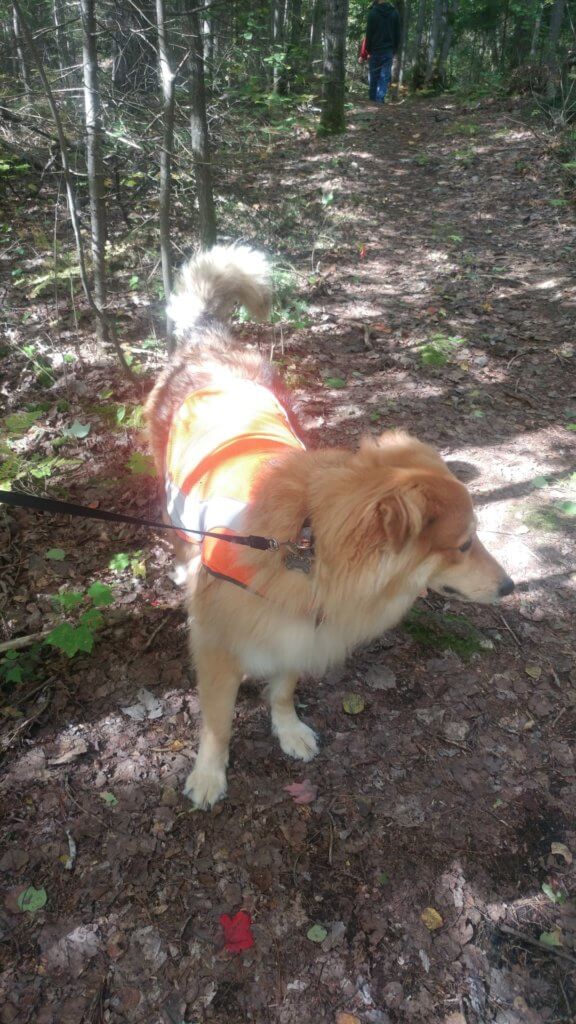
4. Secure Your Dog While Driving
As much as we all love seeing a happy dog with their head out the window, safety comes first.
Letting your dog roam freely in the car may seem harmless, but it can be a serious safety hazard in the event of a sudden stop, accident, or even just a sharp turn.
Not only can your dog get hurt, but they can also distract the driver or interfere with driving controls.
Just like seat belts keep humans safe, there are several secure options for traveling dogs:
Dog Seat Belt Harnesses
These attach to your car’s seat belt system and connect to a specially designed harness.
They allow your dog to sit or lie down comfortably while keeping them restrained in case of an accident.
Make sure you’re using a crash-tested model, and never attach a seat belt to a regular collar—it can be dangerous in a sudden stop.
Crates & Travel Carriers
If your dog is crate-trained, a travel crate can be the safest and most familiar option.
Choose a sturdy, well-ventilated crate that’s appropriately sized. Your dog should be able to stand up, turn around, and lie down comfortably.
Secure the crate in the trunk or back seat so it doesn’t slide around.
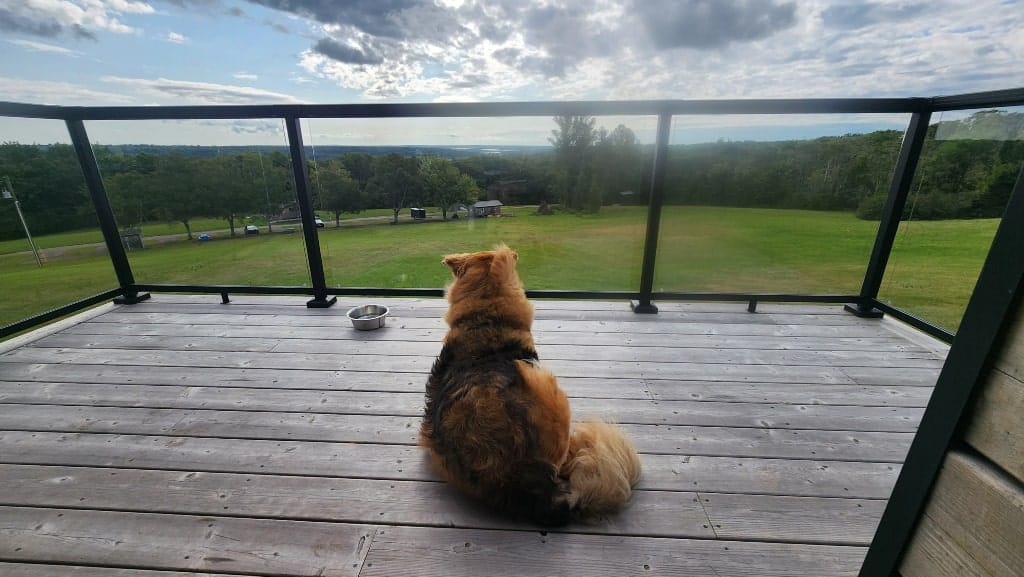
Car Barriers
For larger dogs or SUVs, a mesh or metal barrier between the back seat and front seats is a good option.
It keeps your dog from climbing up front but still gives them some freedom of movement in the back.
Just be sure the cargo area is well-padded and safe.
❗ Important Notes:
- Never allow your dog to ride in the front seat. Airbags can seriously injure or kill dogs in a crash.
- Avoid letting your dog stick their head out the window. While it looks fun, it exposes them to flying debris, dust, or sudden wind gusts that can injure their eyes or ears.
- Keep car windows locked, especially if your dog tends to paw at the buttons.
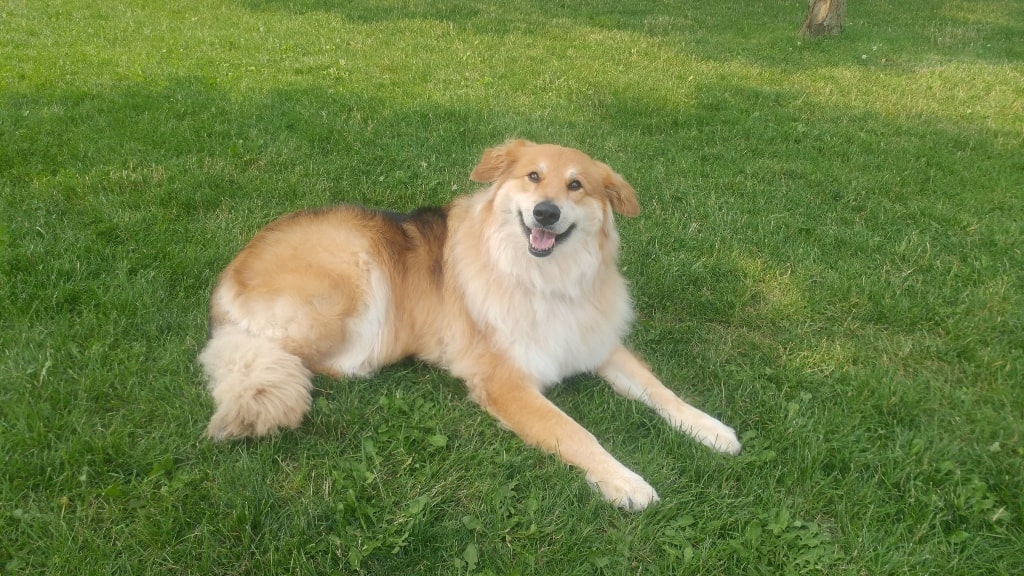
5. Stick To Your Dog’s Routine As Much As Possible
Dogs thrive on routine. From meals and potty breaks to walks and bedtime, structure helps them feel secure and calm, even in unfamiliar environments.
So while road trips are all about adventure for you, your dog will appreciate a bit of predictability along the way.
Try to maintain your dog’s regular schedule as closely as you can. For example, feed your dog at the same times you would at home.
Sudden changes in meal times or type of food can lead to stomach upset. Which is the last thing you want in a confined car or hotel room.
Stick to their usual food, and avoid giving too many unfamiliar treats or “human food” on the road.
If your dog is used to a morning and evening walk, make time for those. Consistent movement helps them burn energy, reduces anxiety, and improves digestion.
Also, try to give them quiet time in the evenings, even if your travel schedule is a little hectic. Dogs need downtime, especially after a day full of new sights, smells, and sounds.
Use your phone’s alarm or reminders to help stay on schedule, especially if you’re changing time zones or distracted by travel plans.
A bit of consistency goes a long way toward helping your dog feel safe, which in turn makes your entire trip smoother and more enjoyable.

6. Never Leave Your Dog Alone In The Car
This one goes without saying, however, I’m still going to mention it because I constantly see this on the news.
One of the most important safety rules when road tripping with your dog is to never leave them alone in the car, not even for a few minutes.
The temperatures inside a vehicle can rise or drop drastically in a short amount of time, even with the windows cracked.
On a warm day, a parked car can turn into an oven within minutes, putting your dog at serious risk of heatstroke or even death.
In cold weather, a car can quickly become frigid, especially for smaller or short-haired breeds.
Beyond temperature concerns, leaving your dog alone can also expose them to stress, anxiety, or even theft.
If you need to stop somewhere your dog isn’t allowed, like a restaurant, shop, or attraction, look for pet-friendly alternatives, use drive-thru options, or take turns going inside if you’re traveling with someone.
Planning ahead and prioritizing places that welcome dogs can help you avoid these situations altogether.
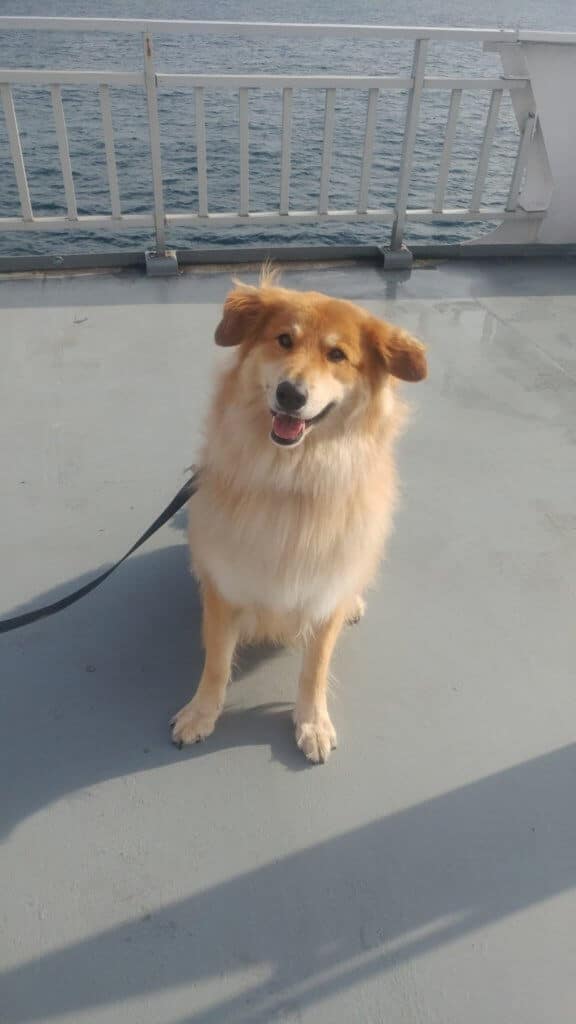
7. Always Have Water Available For Your Dog
Keeping your dog properly hydrated is one of the most important things you can do to keep them healthy and comfortable during a road trip.
Unlike at home, where your dog has easy access to their water bowl all day, being on the road requires you to be more proactive.
Dogs can become dehydrated more quickly in a car, especially if it’s warm, they’re anxious, or they’ve been exercising during rest stops.
Always carry a generous supply of fresh water in a spill-proof container and make it easily accessible at all times.
Collapsible silicone bowls or no-spill travel bowls are perfect for offering quick drinks at stops or even while parked during breaks.
Offer water every couple of hours, even if your dog doesn’t ask for it, because many dogs won’t show signs of thirst until they’re already somewhat dehydrated.
Watch for signs like dry gums, excessive panting, lethargy, or sunken eyes, which can signal your pup needs more fluids.
If you’re traveling in hot climates, consider freezing a bottle of water overnight so it slowly melts throughout the day, giving your dog a supply of cool water.
If it is too hot, pour some of the water on them, especially around the head area to cool them down.
Having water consistently available isn’t just about preventing dehydration.
It also helps regulate your dog’s body temperature, supports digestion, and keeps them feeling their best for the adventure ahead.
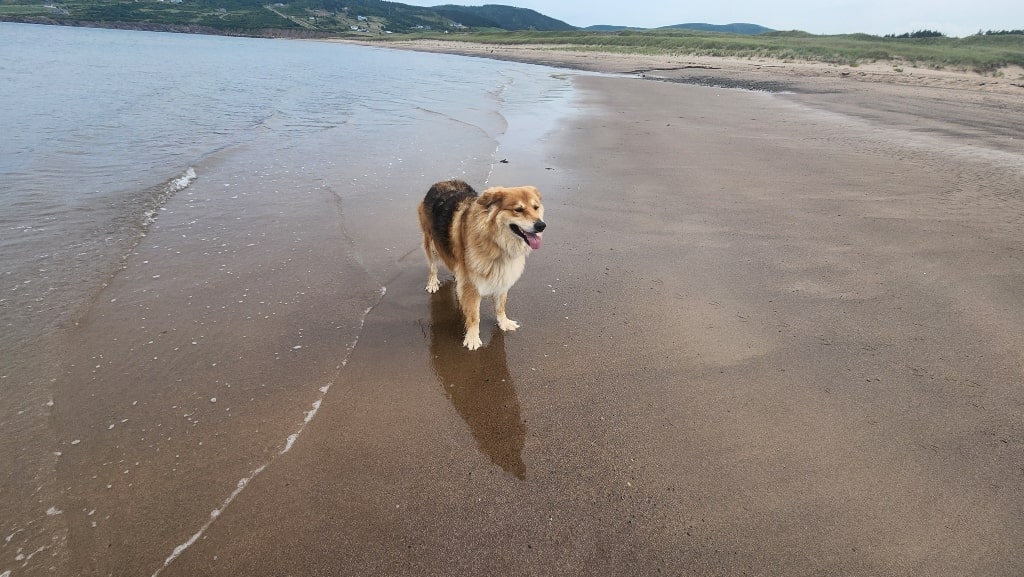
8. Avoid Traveling In High Heat And Humidity
Traveling during the hot summer months might seem like a fun idea. However, for dogs, high heat and humidity can be extremely dangerous, even life-threatening.
Unlike humans, dogs don’t sweat through their skin. They rely mostly on panting to cool themselves down, which is far less effective in humid conditions.
When the air is hot and heavy, your dog’s ability to regulate their body temperature is reduced, putting them at risk of overheating or developing heatstroke.
This is especially true for flat-faced breeds like pugs, bulldogs, or boxers, who already have compromised breathing.
If your travel plans allow flexibility, aim to avoid road trips during the peak heat of summer. Or at least schedule your driving hours for early morning or late evening when it’s cooler.
If you do find yourself on the road during hot weather, make sure the car’s air conditioning is functioning well and never leave your dog inside a parked car, even for a short time.
Plan your outdoor activities for cooler parts of the day. Also, limit your dog’s exposure to hot pavement or sand, which can burn their paws.
Bringing a cooling mat, shade cover, or portable fan can also help manage your dog’s temperature during stops.
Ultimately, being mindful of the weather isn’t just about comfort—it’s about protecting your dog from real health risks that can escalate quickly in extreme heat.
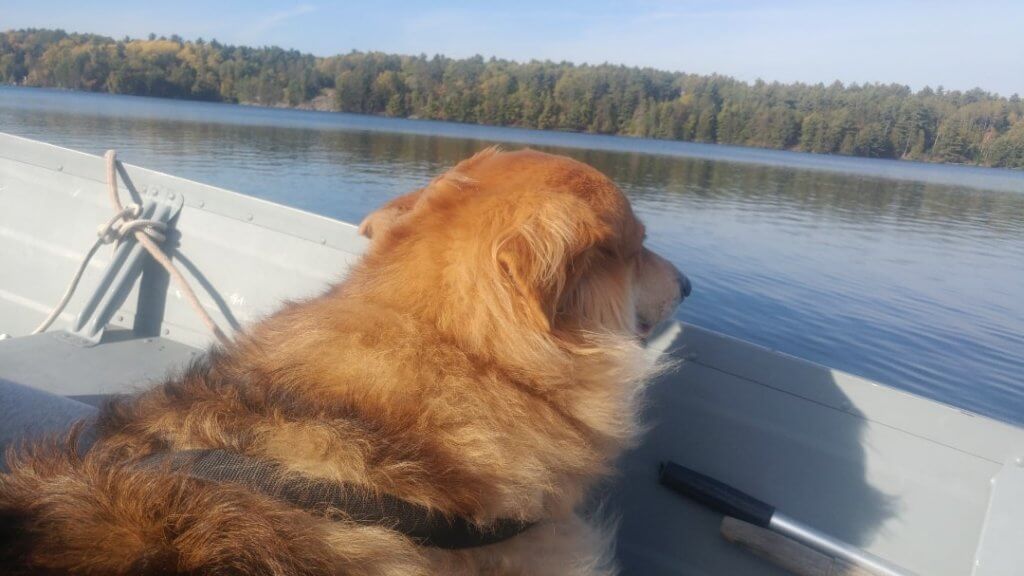
9. Don’t Let Your Dog Eat The Vegetation
While it might seem harmless to let your dog sniff and nibble on grass or plants during a pit stop or hike, it’s important to be cautious.
Many common plants found along trails, in rest areas, or even in hotel landscaping can be toxic to dogs.
In unfamiliar environments, you never know what might be sprayed with pesticides, contaminated with animal waste, or naturally harmful.
Plants like oleander, azaleas, foxglove, mushrooms, and even seemingly benign ones like certain types of ivy or lilies can cause anything from mild stomach upset to serious organ damage.

Dogs explore the world with their mouths.
Therefore, it’s natural for them to want to investigate new smells and textures. However, that curiosity can be dangerous if not supervised.
Always keep your dog on a leash during roadside stops or hikes. Unless you’re in a safe, controlled off-leash area, and redirect them if they start to chew on vegetation.
Also, it’s smart to research common toxic plants in the areas you’re visiting ahead of time. Especially if you’re heading into unfamiliar ecosystems like deserts, forests, or coastal areas.
If you suspect your dog has ingested something suspicious, don’t wait—contact a vet right away.
Keeping a close eye on what your dog puts in their mouth is a simple but crucial way to keep them safe and healthy during your road trip adventures.
My dog is a pig and will eat anything, which is why we have to be very careful with him when we travel.

10. Exercise Before You Hit The Road Each Day
One of the best things you can do to set your dog (and yourself) up for a smooth travel day is to give them a good amount of physical exercise before hitting the road.
A tired dog is a calm dog! And that can make all the difference when you’re confined to a car for hours at a time.
Starting the day with a brisk walk, a game of fetch, or some off-leash time at a dog park allows your pup to burn off excess energy, release tension, and go potty before settling into the vehicle.
This helps reduce restlessness, anxiety, and undesirable behaviors like whining, barking, or trying to climb into the front seat.
Even just 20–30 minutes of active movement can make a noticeable difference in your dog’s demeanor during the drive.
Also, it provides valuable mental stimulation. Especially if you’re exploring a new place and your dog gets to sniff around and engage with their environment.
Make it part of your routine! Grab your morning coffee and take your pup for a walk before you start driving.
If your dog has specific needs, like being high-energy or prone to car anxiety, you may want to increase the intensity or length of the morning activity.
Not only will this help your dog feel more relaxed during the drive, but it also sets a positive tone for the rest of the day.
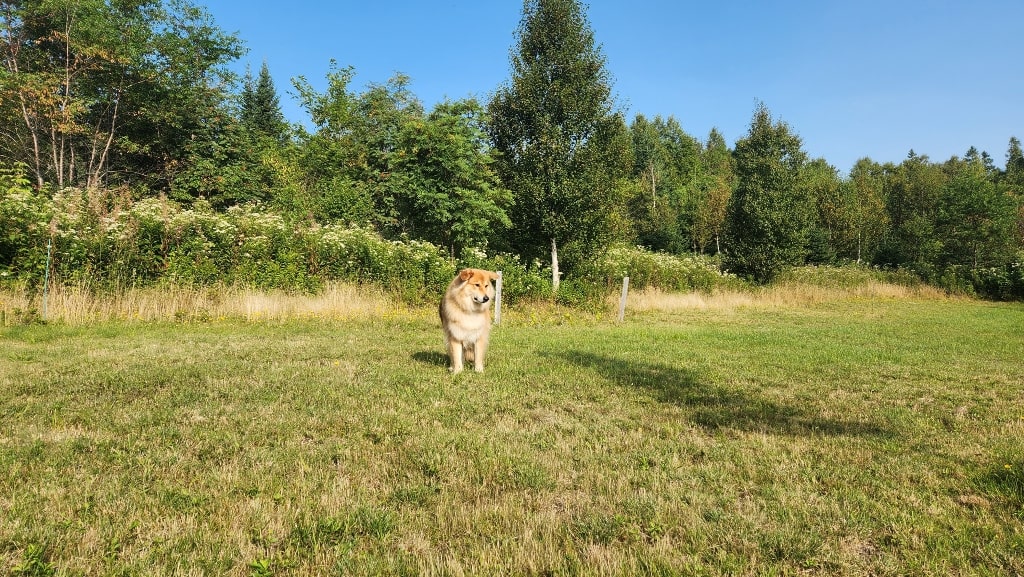
Pet Travel Kit Checklist
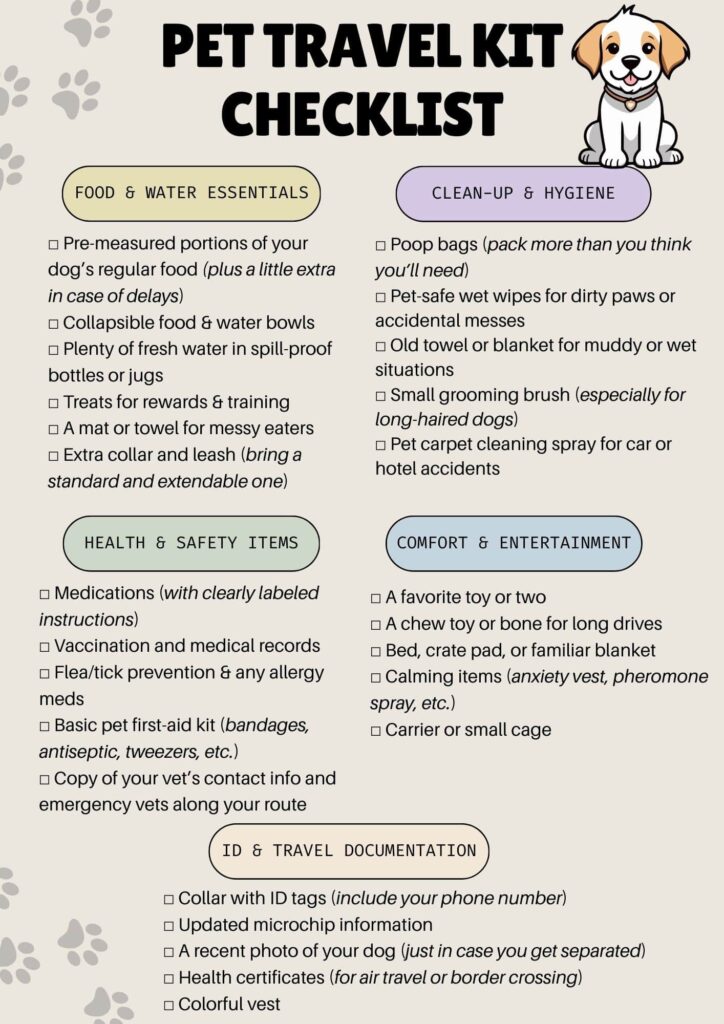
Final Thoughts: 10 Tips For A Stress-Free Road Trip With Your Dog
Doing a road trip with your dog can be one of the most rewarding ways to travel.
But like any good journey, a little planning goes a long way.
By staying prepared, sticking to routines, and prioritizing your pup’s comfort and safety, you’ll set the stage for a smooth and enjoyable trip for both of you.
Whether you’re cruising along scenic highways or pulling over for dog-friendly hikes, these simple tips will help ensure your dog stays happy, healthy, and just as excited about the adventure as you are.
